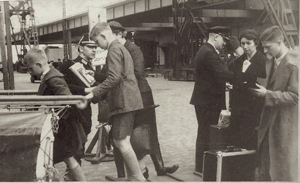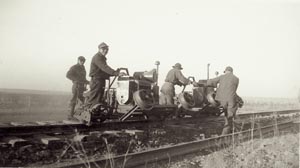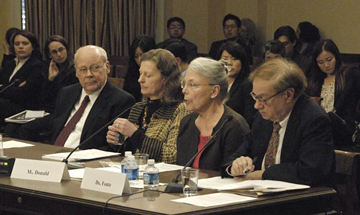German-American Internment ⎥The Max Ebel Story
 Max Ebel was born in Speyer, Germany in 1919. As a young man Max refused to join the Hitler Youth. Because of that, life in Speyer became very dangerous for Max, and ultimately led him to immigrate to the United States in 1937. Max settled in Boston. He was 17 years old.
Max Ebel was born in Speyer, Germany in 1919. As a young man Max refused to join the Hitler Youth. Because of that, life in Speyer became very dangerous for Max, and ultimately led him to immigrate to the United States in 1937. Max settled in Boston. He was 17 years old.
Four years later, on December 7, 1941, when the Japanese bombed Pearl Harbor, life changed drastically for Max. President Roosevelt issued Presidential proclamations pursuant to the Alien Enemies Act declaring all Japanese, German, and Italian aliens to be “enemy aliens” and placing them under the jurisdiction of the Department of Justice. Along with over 1,000,000 resident aliens, Max had to register, be fingerprinted, and carry a picture ID. No enemy aliens were allowed to have radios, cameras, firearms and their travel was severely restricted. Max’s citizenship plans stopped and he registered with the Selective Service. When asked if he would fight for the US in Germany, he said, “no,” adding that he was willing to fight in the Pacific. He stated that he did not want to fight against his cousins, brother and friends in the land of his birth.
On September 28, 1942 Max, then 23, was picked up from work for questioning. He didn’t return home for another two and one-half years.
Max was first sent to the Boston immigration station where he remained with other detainees, German and Japanese, for 3 months.
Max Ebel was interned from September 1942 until June 1944. The reason for his internment was never explained to him.
Between these years, Max was sent to five different internment facilities in the US; the last, Ft. Lincoln, in Bismarck, North Dakota housed some 1,000 men. It was from Ft. Lincoln that Max, along with over 100 other internees, went to work replacing rails for the Northern Pacific Railroad. During this time, the men lived in boxcars, 6-8 men/car, heated by a coal stove. Water was held in a tank car at the rear of the train. There were no bathroom facilities. They lived in these cars throughout the winter.
His daughter, Karen Ebel, has worked tirelessly to bring her father’s and other German-American World War II Internee’s stories to light.
Unlike Japanese Americans who were interned during the war, the plight of German-American internees has never been acknowledged.
Max Ebel died in 2007.
For additional information, reference: http://www.gaic.info/
Photos: From the Ebel Family Collection
Top photo: Max, far right, boarding the SS New York in May 1937
Center photo: Max on spike puller, center, back to camera with floppy hat
Bottom photo: March 19, 2009—Congressional Oversight Hearing Held to Review the U.S. Wartime Treatment of German Americans and German Latin Americans.
European American/Latin American panel from left: John Christgau, Karen Ebel, Heidi Donald, and John Fonte.
Much of the copy for this post was taken from Max Ebel, a German Immigrant’s Story, German-American Internee Coalition website.
CLICK ON LINKS TO LISTEN:
Copyright Story Preservation Initiative. All rights reserved.


One Response to “German-American Internment ⎥The Max Ebel Story”
A great American story…and importantly, a matter of deferred injustice against German Americans, that is still waiting for proper adjudication by the U.S. Congress.
Dr. albert jabs